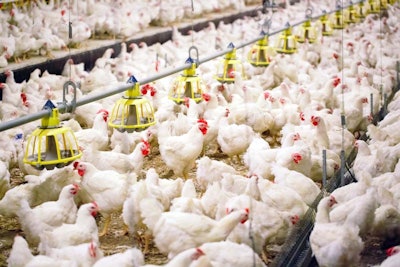
When given as a feed additive, phytogenics could help reduce the incidence of necrotic enteritis and other enteric diseases in poultry, reducing the need for antibiotics to treat the disease.
These natural feed additives are plant-derived compounds that have antimicrobial, antifungal and/or antibacterial properties. Examples include turmeric, chili powder, Quilliaia extract made from the back of a Chilean tree and other essential oils.
Researchers aren’t quite sure why phytogenics help improve necrotic enteritis control.
“We’re still trying to understand what the mechanism of action is,” Candice Blue, graduate student research assistant, University of Georgia, said.
Necrotic enteritis typically develops as a complication of other diseases, like coccidiosis, that impact intestinal function or cause immunosuppression. The intestinal damage allows Clostridium perfringens, a normal inhabitant of the intestinal tract, to attach, proliferate and produce toxins.
“We think that the phytogenic compounds penetrate the cell membrane of some bacteria, impacting its cellular permeability” she added.
“I like to call phytogenics a preventative measure,” Blue said. “We’re trying to make sure that it doesn’t get to the point of having to use antibiotics.
Current strategies to control necrotic enteritis rely on vaccination against coccidiosis and the other diseases that predispose poultry to intestinal inflammation or antibiotics.
Antibiotic use under scrutiny
Antibiotic use in poultry and other livestock is under scrutiny due to growing antibiotic resistance and consumer concerns. Resistance, when bacteria develops the ability to defeat the drugs designed to kill them, can devastate poultry flocks and affect the livelihood of farmers.
In addition, a growing number of poultry producers are pledging to raise birds antibiotic-free or with no antibiotics ever in response to these concerns. However, this leaves producers in a quandary because antibiotics remain the best treatment available for certain diseases until effective alternatives are developed.
“This is something that’s going to be ongoing. It’s something that’s going to continue to be with us, especially the more people want us to try and not use antibiotics as the first response,” Blue explained.

















